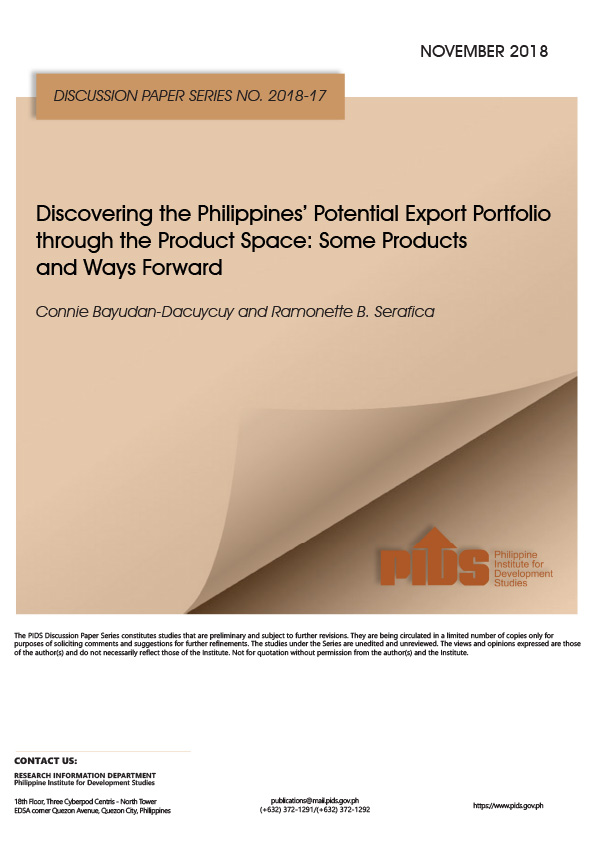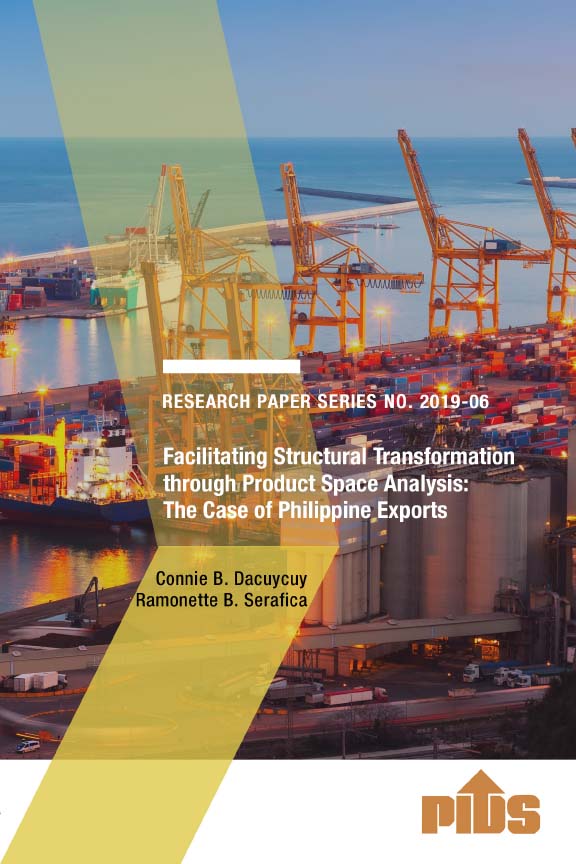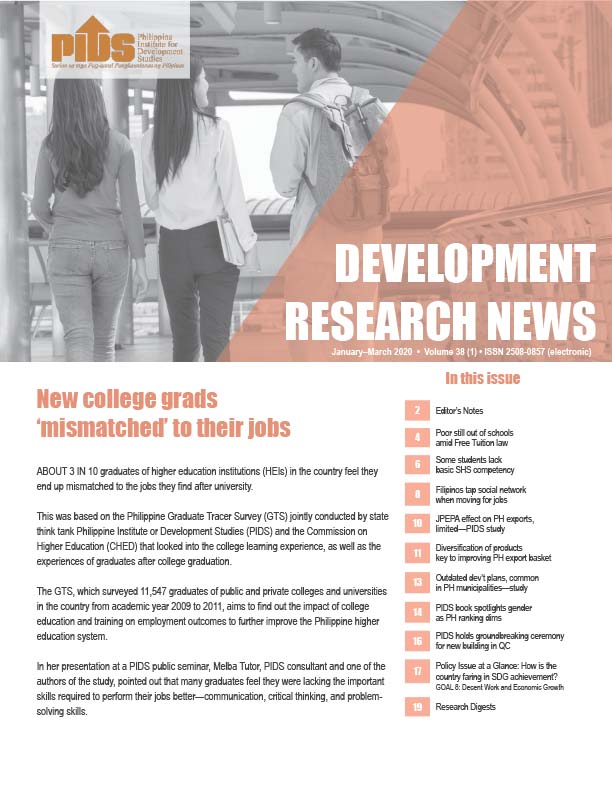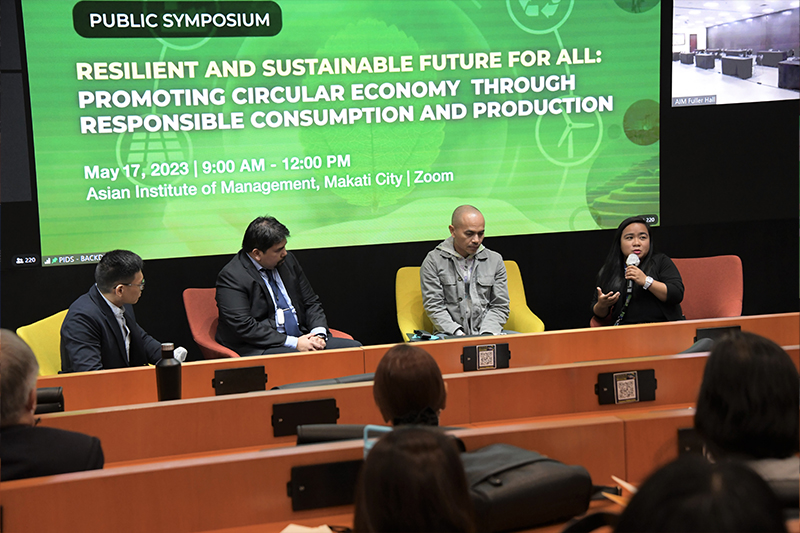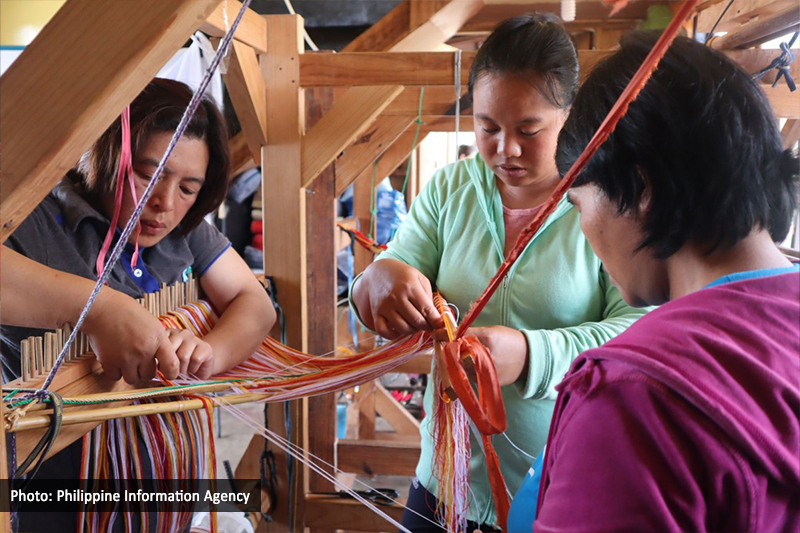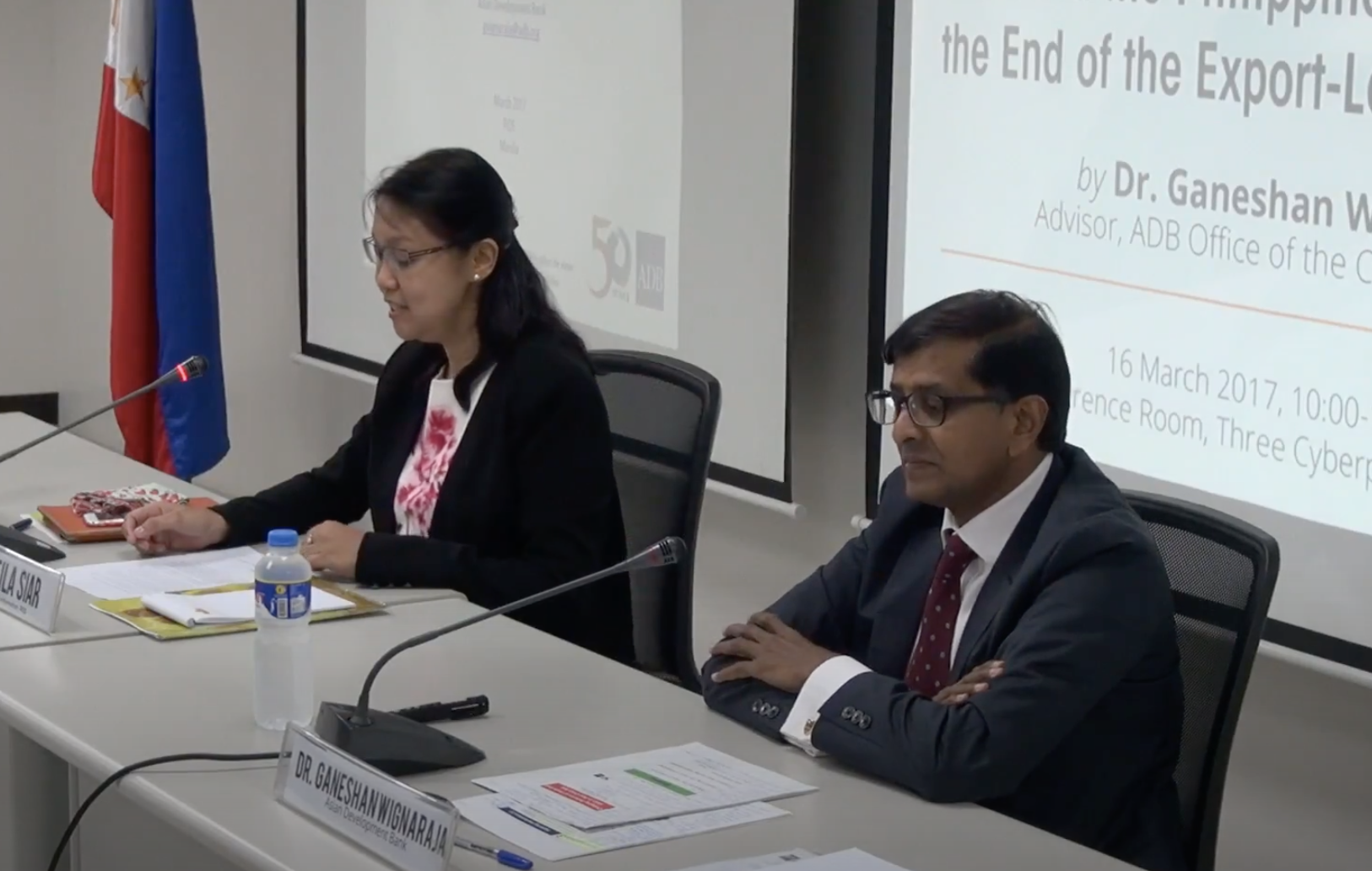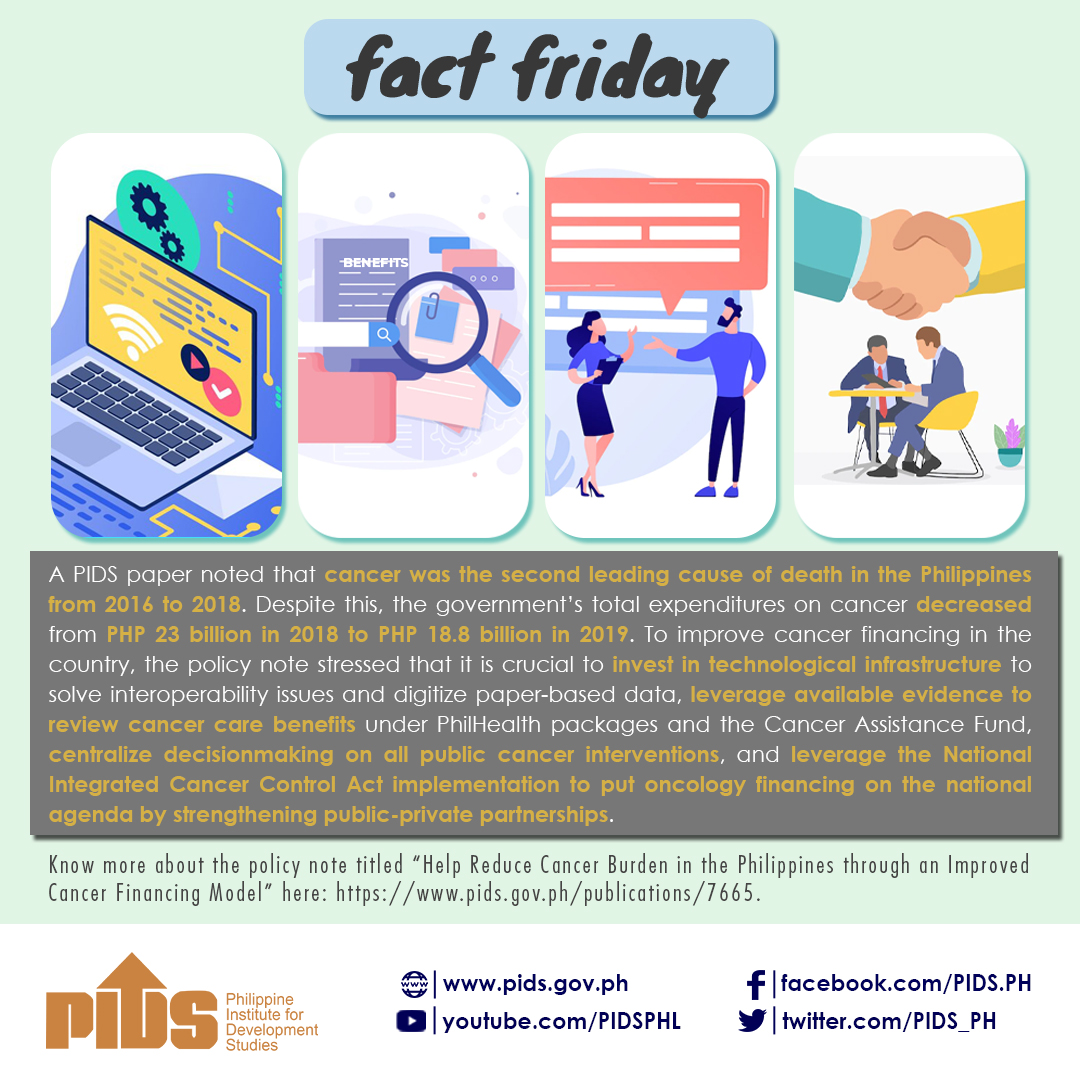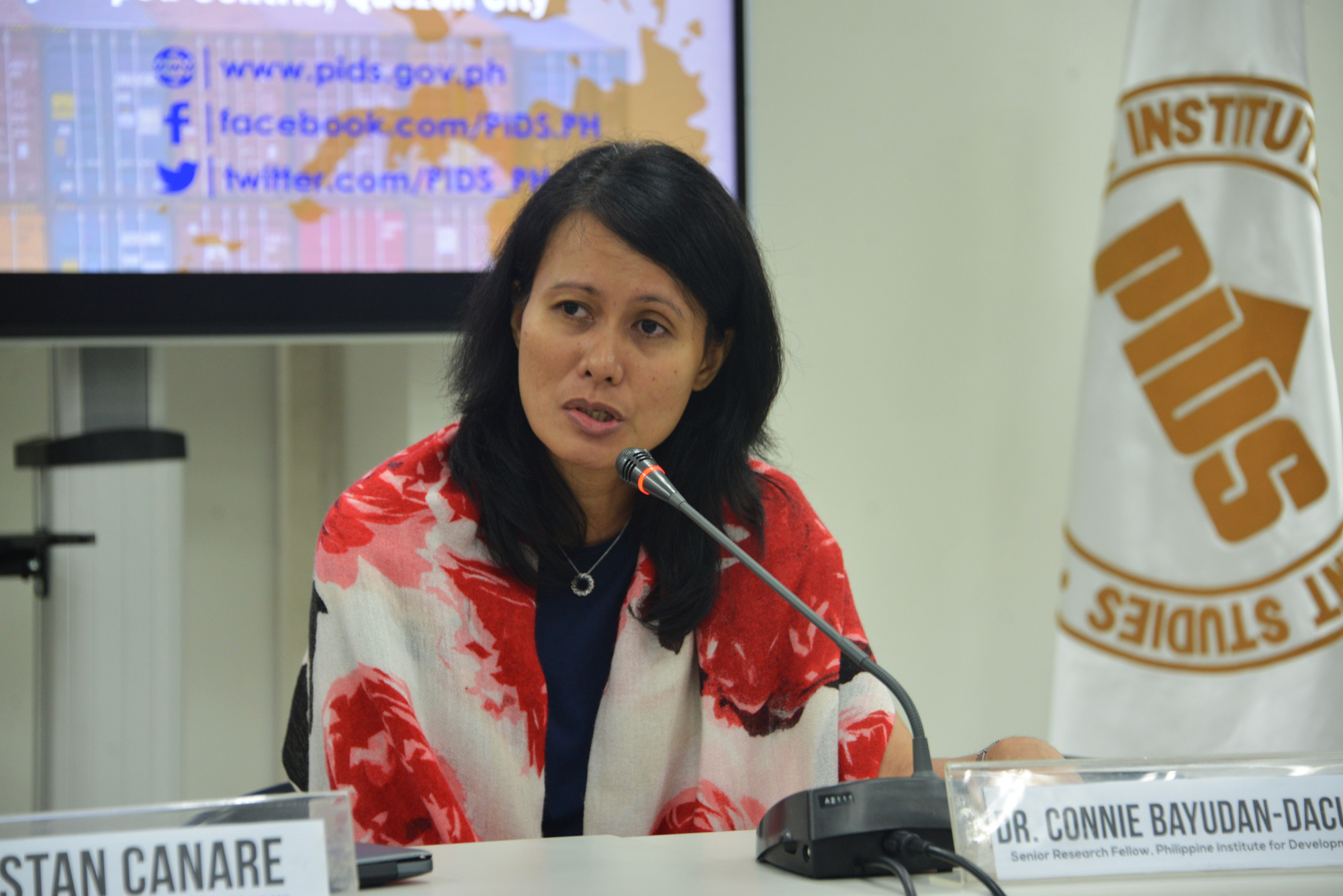
The country’s export basket has a potential to evolve despite barely improving from 1995 to 2014, a study published by state think tank Philippine Institute for Development Studies (PIDS) showed.
In a public seminar recently organized by PIDS, Connie Bayudan-Dacuycuy, senior research fellow at PIDS and coauthor of the study, emphasized that the Philippines must undergo structural transformation or the transition from agricultural to industrial, and eventually, to the services sector—a process that richer and developed countries went through.
“The problem with the Philippine case is that we seem to have skipped a step. We moved from agriculture to services without even industrializing,” Bayudan-Dacuycuy pointed out, emphasizing that the industry sector is where learning and innovation of products take place.
She also noted that the agricultural sector’s employment share is still high at 26 percent in 2016. However, its contribution to the country’s gross domestic product is declining, saying “there is an issue of productivity” in the sector.
In the study, Bayudan-Dacuycuy and her co-author, PIDS Senior Research Fellow Ramonette Serafica, identified potential commodities that the country can produce to improve the sophistication of its export basket.
They used the product space, a visual representation of how close goods are to each other, to look at goods that have the same production requisites as these are less costly to produce and will make diversifying into other products easier.
The study found that from 1995 to 2014, the average sophistication of the country’s export basket barely improved. For instance, from 2005 to 2014, a large portion of its export portfolio belonged to the same product—integrated circuits—whose sophistication content “is very low compared to the average in the world market”.
Results of the study also showed that developing countries like the Philippines “need to undertake significant transformation in their production structure” as there are only “few sophisticated products that these economies can potentially diversify into”.
In 2014, relatively sophisticated products such as static converters, semiconductor devices, telegraph equipment, electric capacitors, electronic printed circuits, cruise ships, and ferry boats were included in the export portfolio but they accounted only for a small portion of the country’s total export. Some of these, according to Bayudan-Dacuycuy, “have forward linkages to goods with higher sophistication content”.
Likewise, the study found that the agricultural sector can also move to agroprocessing and producing goods with higher sophistication content such as woven twill and processed meat like swine belly and poultry cuts. She, however, noted that these products “do not lead to the most sophisticated among the agricultural products in the world” such as offal and cheese.
“The idea here is that if we're able to improve our production structure now, then there is a possibility for new products to come along that can lead us to these products with high sophistication content,” Bayudan-Dacuycuy said, stressing that the study does not recommend focusing only on the identified products.
These opportunities, she emphasized, mean having to “lay out well-thought out policies, plans or priorities” as “structural transformation does not happen overnight.”
As part of the study’s recommendations, Bayudan-Dacuycuy encouraged the government to create an enabling environment by promoting competition, innovation, and research on science and technology. She also mentioned the need to enhance industrial policies.
More importantly, she suggested harnessing the potential of the agricultural sector, saying that even though productivity issues hound it, “there is a possibility for us to build on the production structures of cereals, fruit mixtures, glycerol, and oils in order for us to produce agroprocessed goods.” ###
In a public seminar recently organized by PIDS, Connie Bayudan-Dacuycuy, senior research fellow at PIDS and coauthor of the study, emphasized that the Philippines must undergo structural transformation or the transition from agricultural to industrial, and eventually, to the services sector—a process that richer and developed countries went through.
“The problem with the Philippine case is that we seem to have skipped a step. We moved from agriculture to services without even industrializing,” Bayudan-Dacuycuy pointed out, emphasizing that the industry sector is where learning and innovation of products take place.
She also noted that the agricultural sector’s employment share is still high at 26 percent in 2016. However, its contribution to the country’s gross domestic product is declining, saying “there is an issue of productivity” in the sector.
In the study, Bayudan-Dacuycuy and her co-author, PIDS Senior Research Fellow Ramonette Serafica, identified potential commodities that the country can produce to improve the sophistication of its export basket.
They used the product space, a visual representation of how close goods are to each other, to look at goods that have the same production requisites as these are less costly to produce and will make diversifying into other products easier.
The study found that from 1995 to 2014, the average sophistication of the country’s export basket barely improved. For instance, from 2005 to 2014, a large portion of its export portfolio belonged to the same product—integrated circuits—whose sophistication content “is very low compared to the average in the world market”.
Results of the study also showed that developing countries like the Philippines “need to undertake significant transformation in their production structure” as there are only “few sophisticated products that these economies can potentially diversify into”.
In 2014, relatively sophisticated products such as static converters, semiconductor devices, telegraph equipment, electric capacitors, electronic printed circuits, cruise ships, and ferry boats were included in the export portfolio but they accounted only for a small portion of the country’s total export. Some of these, according to Bayudan-Dacuycuy, “have forward linkages to goods with higher sophistication content”.
Likewise, the study found that the agricultural sector can also move to agroprocessing and producing goods with higher sophistication content such as woven twill and processed meat like swine belly and poultry cuts. She, however, noted that these products “do not lead to the most sophisticated among the agricultural products in the world” such as offal and cheese.
“The idea here is that if we're able to improve our production structure now, then there is a possibility for new products to come along that can lead us to these products with high sophistication content,” Bayudan-Dacuycuy said, stressing that the study does not recommend focusing only on the identified products.
These opportunities, she emphasized, mean having to “lay out well-thought out policies, plans or priorities” as “structural transformation does not happen overnight.”
As part of the study’s recommendations, Bayudan-Dacuycuy encouraged the government to create an enabling environment by promoting competition, innovation, and research on science and technology. She also mentioned the need to enhance industrial policies.
More importantly, she suggested harnessing the potential of the agricultural sector, saying that even though productivity issues hound it, “there is a possibility for us to build on the production structures of cereals, fruit mixtures, glycerol, and oils in order for us to produce agroprocessed goods.” ###

